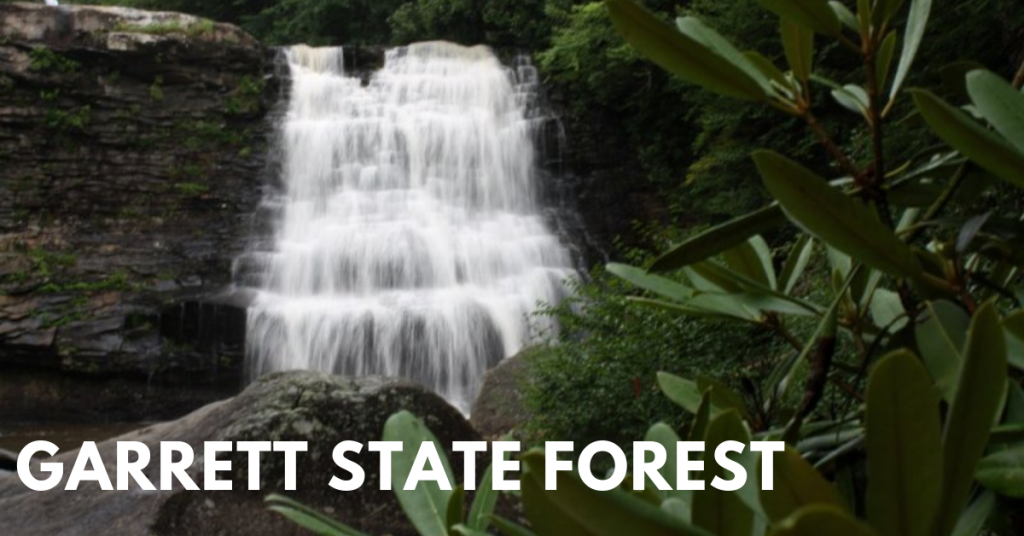Garrett State Forest is the birthplace of forestry conservation in Maryland. It is important to note the key role Garrett County and its public lands played in preserving the natural environment.

Garrett State Forest History
During the early 1900’s, just 20% of mature forest cover existed east of the Mississippi. The previous century saw large scale timber operations greatly exceed timber growth. One of the results was large, uncontrolled forest fires that further damaged the fragile environment. Most of Maryland’s forests were populated with small stands of regenerating seedlings or saplings. Large trees were truly an unusual sight.
In response to the deplorable conditions of the state’s forests, the descendants of one of Garrett County’s founding fathers issued a challenge to the state government. John and Robert Garrett were heirs to the B&O Railroad fortune who offered a generous donation of nearly 2,000 acres of forest land on one “small” condition. The state must create a department specifically for the management and supervision of public lands. Accepting the gift and the conditions, a forestry law was passed in 1906 establishing a Board of Forestry. This made it the third state in the Union to enact such a law. The tract of land donated by the Garrett brothers became is part of what is now Garrett State Forest, Maryland’s first state forest. It has expanded over time to include about 8,000 acres of mountain forests, streams and valleys.
The state’s land holdings continued to grow throughout the early 20th century under the direction of Director Fred Besley. Land was acquired through private donations or purchased with state funds. With the advent of the automobile and the rise of the middle class, there was an increased demand for recreational access to state forests and parks. In 1929 the Forestry Board created the 50,000 acre Savage River State Forest in Garrett County and in 1931 organized the 12,000 acre Potomac State Forest.
In March of 1933 President Franklin D. Roosevelt established the Civilian Conservation Corps for the purpose of performing conservation work while employing thousands of jobless men during the Great Depression. The C.C.C., sometimes referred to as the “tree army”, reforested thousands of acres, built park roads, erected dams and bridges, restored historic sites and fought forest fires across the country. They are responsible for developing much of Maryland’s public lands for recreational use with most of their work concentrated in Western Maryland. Garrett County was home to seven C.C.C. camps. Workers were responsible for the construction of the 13 acre dam at New Germany State Park as well as the 53 acre lake at Herrington Manor. They also built many of the pavilions, cabins and buildings that are still in use today at New Germany, Herrington Manor and Swallow Falls State Parks. The regular maintenance they preformed on the forest roads aided in preventing forest fires while setting an example for future preservation efforts. Many of the trails enjoyed by hikers and bikers today are present due to the efforts of the C.C. C.
Garrett State Forest Today
The forest is home to red oak, white oak, scarlet oak, black cherry, hickory, red maple, white pine and hemlock along the stream banks. Mountain streams trickle throughout the region, offering visitors glimpses of beaver ponds and cranberry bogs. Many wildlife species make their home in this forest.[
The forest offers a number of recreational opportunities including cross country skiing, camping, fishing, hiking trails, historic interest, hunting, riding trails, and snowmobiling.
This state forest has about 20 miles of hiking trails in between Swallow Falls and Herrington Manor State Parks. The trails range from relatively flat and easier to intermediate and somewhat steep.
Maryland has over 130,000 acres of public land, 80,000 of which lie in Garrett County. Not only do state parks and forests allow visitors to experience natural wonders and significant historic sites, but they also employ hundreds of full-time and seasonal workers. Before the donation made by the Garrett Brothers in 1906, there was no state forest land in Maryland. Their generosity was the catalyst for Maryland’s 100-year proven track record of conservation leadership. It is up to all of us to work together to ensure a bright future that will be celebrated 100 years from now.





